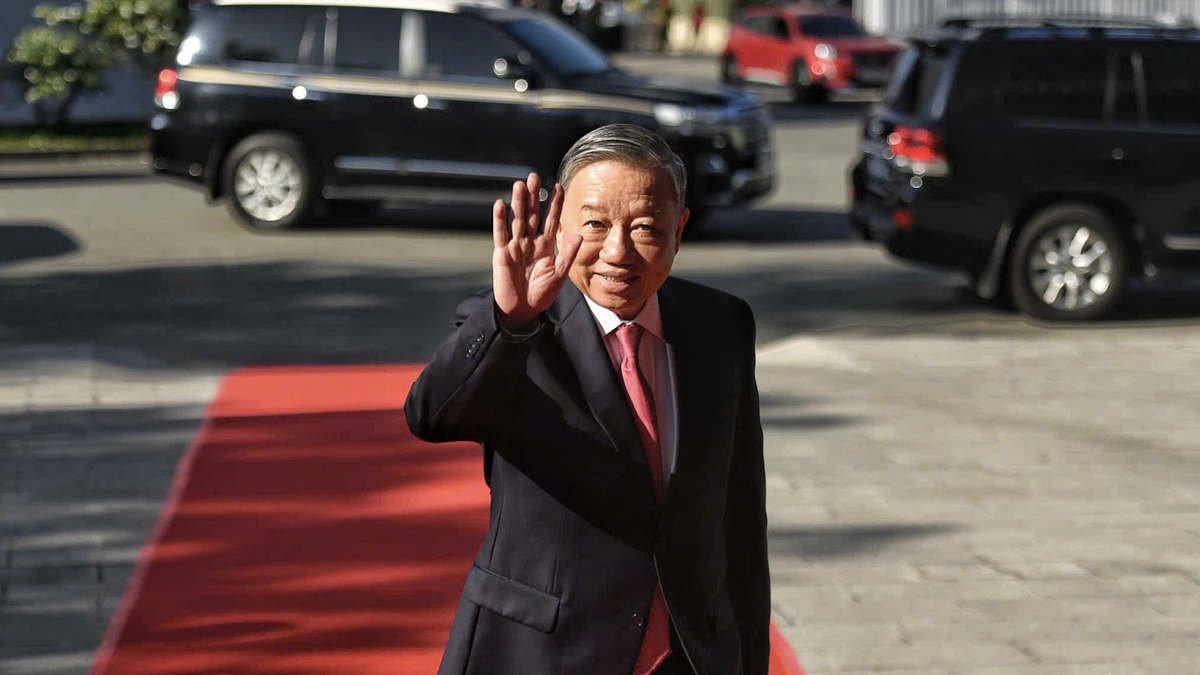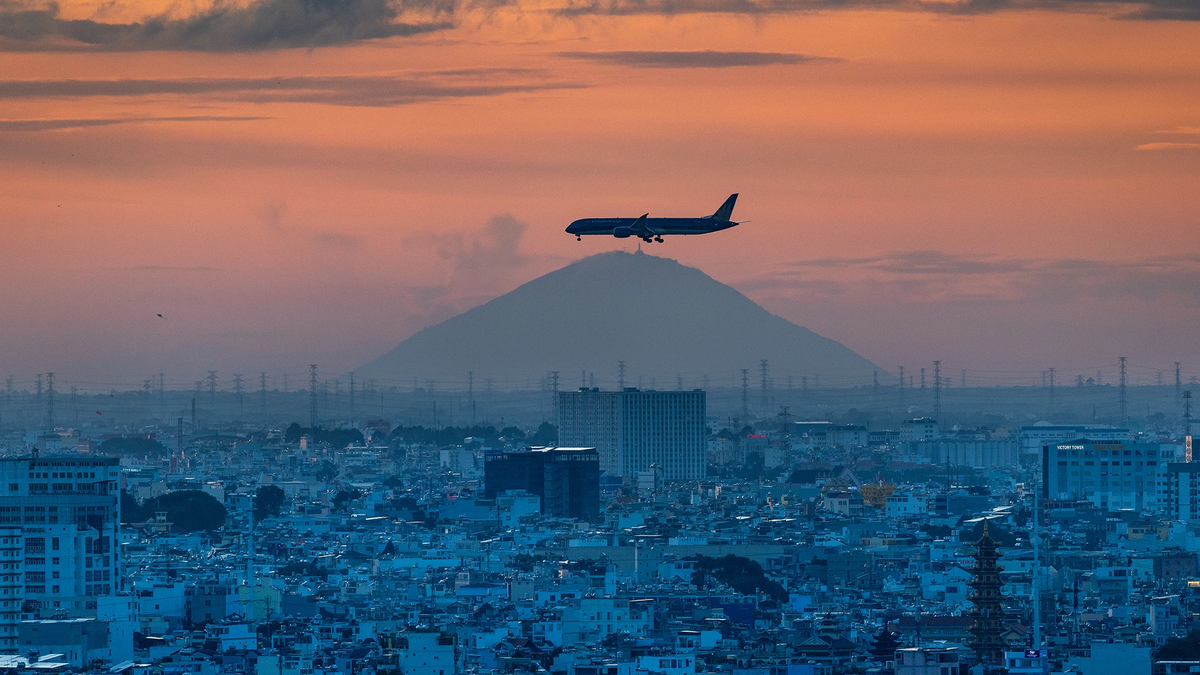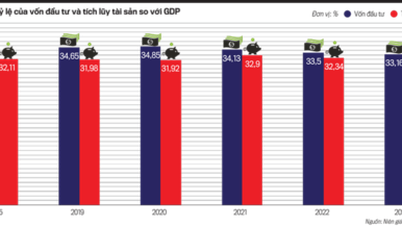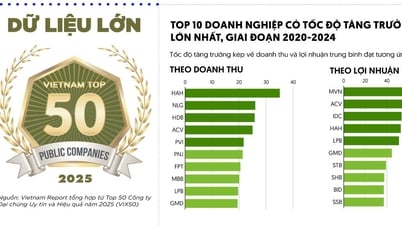“Headwinds” to the world economy
In its latest World Economic Outlook report, the International Monetary Fund (IMF) assessed that 2023 will continue to be a difficult year for the global economy as it faces a series of challenges, from declining gross domestic product (GDP) growth, increasing bad debt, declining trade and investment turnover, to the unwanted consequences of geopolitical instability and non-traditional security challenges such as the severe impact of climate change...
Too many of those “headwinds” have pushed the global economy in 2023 into one of the bleakest periods since the 2007-2008 global financial crisis.

Vietnam's economy is a bright spot in the global economic picture in 2023.
Although the Covid-19 pandemic has ended globally, its aftershocks still leave a "pain" for many economies. Along with that, according to the IMF, the prolonged and fierce military conflict between Russia and Ukraine right in the heart of Europe - a major economic center of the world - has led to disruptions in the world's energy and food markets, and most recently, the large-scale conflict between the Hamas Islamic Movement and Israel in the Gaza Strip has also had a serious impact because it took place in the "oil center" of the Middle East, which is extremely sensitive to the global economy.
Overall, according to the IMF's assessment, global economic conditions in 2023 will remain quite fragile, vulnerable to economic and geopolitical risks. Meanwhile, the burden of public debt and the unprecedented tightening of monetary policy in many countries have created additional obstacles and slowed down the economic recovery process despite the positive developments in early 2023.
The world's leading financial institution said that global economic activity has not yet returned to pre-Covid-19 levels, especially in emerging markets and developing economies, and there are growing regional differences and fragmentation. Along with that are negative impacts from other more cyclical factors, such as the reduction of financial support in many countries in the context of high public debt and geopolitical instability around the world.
Global food prices are also high and facing frequent supply disruptions, causing difficulties for many low-income countries and developing economies. This has left many countries struggling under pressure to fight inflation and economic recovery always facing obstacles.
Strong “headwinds” have pushed back global economic growth in 2023. The latest report from the prestigious credit rating agency Fitch Ratings assessed that the world's overall GDP growth in 2023 will reach around 2.5-3%, lower than the previous forecast of 3.3-3.5% by the IMF and the Organization for Economic Cooperation and Development (OECD).
Meanwhile, the World Bank (WB) gave a less positive forecast, saying that global GDP growth in 2023 will not even exceed 2.1%, despite an upward adjustment of 0.4 percentage points compared to the forecast in the first quarter of 2023. Leading economies - the world's most developed economies - will only achieve a growth rate of 0.7%, while developing economies and emerging markets are expected to grow by 4% this year.
The global economic picture in 2023 is even more bleak as global trade this year is estimated to decline by 5% compared to 2022, according to data from the United Nations Conference on Trade and Development (UNCTAD). In the Global Trade Update report released on December 11, UNCTAD estimated that global trade turnover in 2023 will reach approximately 30,700 billion USD, down nearly 2,000 billion USD compared to 2022, equivalent to a decrease of 8%.
“Bright Spot” of Asia and Vietnam
However, the IMF believes that there are still many bright spots in the main picture of the world economy in 2023. One of the brightest spots is that global core inflation is on track to decline from 9.2% in 2022 to 5.9% this year and this trend will continue to fall to around 4.8% in 2024. Core inflation, excluding volatile food and energy prices, is also expected to decline to 4.5%.
Goldman Sachs Research expressed optimism about global economic growth in 2023, saying the results exceeded the expectations of most economists.
Other bright spots include slow but steady economic growth, a buoyant labor market, and a pickup in global spending after the post-Covid-19 slowdown. Unemployment rates in most major economies are around 0.5 percentage points lower than pre-pandemic levels. These are notable signs for economists to believe that the global economy will have a “soft landing” this year and next.
Asia still stands out as a region with higher economic growth than the global average. In the Asian Development Outlook report released on December 16, the Asian Development Bank (ADB) acknowledged that the Asian economy has shown more positive signs and the region's growth this year is expected to reach 4.9% (slightly higher than the forecast of 4.7% in September), mainly thanks to the recovery of the Chinese economy. The largest financial institution in the region also raised its growth forecast for the world's second largest economy, China, from 4.9% to 5.2% this year. According to the assessment, the Chinese economy grew higher than expected in the second quarter of 2023.
In the report, ADB also noted that the economic growth of the region of 46 economies - excluding Japan, Australia and New Zealand - was "leveraged" by policies to stimulate domestic consumption, the recovery of the tourism industry and a sharp increase in remittances. Industrial production and domestic consumption activities in September both reversed sharply, thanks to the government's application of policies to restore and develop the economy in the post-pandemic period.
According to the IMF, the US is also one of the bright spots of the world economy in 2023. The US economy has shown greater strength than expected, not only escaping the risk of recession, but also growing steadily in 2023. Strong consumer spending, stable investment growth, with effective support from a solid job market and a record low unemployment rate (about 3.9%) in many years, have helped the US economy grow by 5.2% in the third quarter of 2023, the highest level since the fourth quarter of 2021, becoming a driving force for the global economy.
According to the IMF, emerging and developing economies, especially in the Asia-Pacific region, are a bright spot with growth rates that could reach about 4% in 2023. Notably, Vietnam's economy is also a bright spot in the overall economic picture of the region and the world. Vietnam's GDP growth in the first three quarters of the year reached 4.2%, much higher than the average global growth rate of 3.0% as previously forecast by the IMF. ADB believes that Vietnam's growth in 2023 will reach about 5.2% and increase to 6% next year.
Chairman of the World Economic Forum (WEF) Klaus Schwab previously assessed in September 2023 that Vietnam is a bright spot in world economic growth after the Covid-19 pandemic thanks to its comprehensive approach to macroeconomic governance, helping the economy overcome the challenges of the current international and regional context.
Although still gloomy, the IMF believes that the global economy has avoided a new recession and that is the basis for confidence and hope for a brighter global economy in 2024.
Source anninhthudo
Source































































































Comment (0)